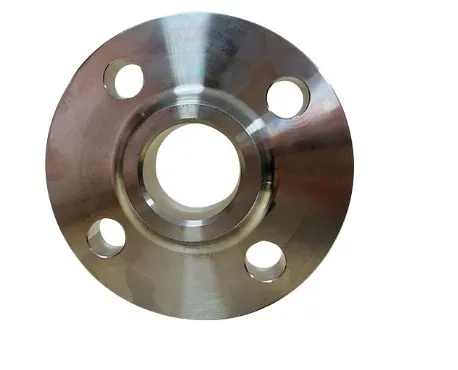-
Cangzhou Yulong Steel Co., Ltd.
-
Phone:
+86 13303177267 -
Email:
admin@ylsteelfittings.com
- English
- Arabic
- Italian
- Spanish
- Portuguese
- German
- kazakh
- Persian
- Greek
- French
- Russian
- Polish
- Thai
- Indonesian
- Vietnamese
- Zulu
- Korean
- Uzbek
- Hindi
- Serbian
- Malay
- Ukrainian
- Gujarati
- Haitian Creole
- hausa
- hawaiian
- Hebrew
- Miao
- Hungarian
- Icelandic
- igbo
- irish
- Japanese
- Javanese
- Kannada
- Khmer
- Rwandese
- Afrikaans
- Albanian
- Amharic
- Armenian
- Azerbaijani
- Basque
- Belarusian
- Bengali
- Bosnian
- Bulgarian
- Catalan
- Cebuano
- China
- China (Taiwan)
- Corsican
- Croatian
- Czech
- Danish
- Esperanto
- Estonian
- Finnish
- Frisian
- Galician
- Georgian
- Kurdish
- Kyrgyz
- Lao
- Latin
- Latvian
- Lithuanian
- Luxembourgish
- Macedonian
- Malgashi
- Malayalam
- Maltese
- Maori
- Marathi
- Mongolian
- Myanmar
- Nepali
- Norwegian
- Norwegian
- Occitan
- Pashto
- Dutch
- Punjabi
- Romanian
- Samoan
- Scottish Gaelic
- Sesotho
- Shona
- Sindhi
- Sinhala
- Slovak
- Slovenian
- Somali
- Sundanese
- Swahili
- Swedish
- Tagalog
- Tajik
- Tamil
- Tatar
- Telugu
- Turkish
- Turkmen
- Urdu
- Uighur
- Welsh
- Bantu
- Yiddish
- Yoruba

10月 . 15, 2024 10:46 Back to list
Exploring Class 300 Flanges and Their Applications in Pipe Systems
Understanding Class 300 Flanges An Overview
Flanges play a crucial role in piping systems, providing a means of connecting pipes, valves, and other equipment. Among the various classes of flanges available, Class 300 flanges are notably important in many industrial applications. This article will delve into what Class 300 flanges are, their specifications, applications, and advantages.
What are Class 300 Flanges?
Class 300 flanges refer to a specific type of flange rated for a certain pressure-temperature (P-T) dimension. The Class designation indicates the pressure rating of the flange at various temperatures, with Class 300 flanges being capable of withstanding higher pressure compared to lower class flanges, such as Class 150. The classification is based on the American National Standards Institute (ANSI) standards, specifically ANSI/ASME B16.5 for flanges that are applicable in a variety of contexts.
The materials used for Class 300 flanges can vary widely, but they are commonly manufactured from carbon steel, stainless steel, and alloy steel. The choice of material depends on the application, environmental considerations, and the specific medium being transported through the pipes.
Specifications of Class 300 Flanges
Class 300 flanges come with specific dimensions and pressure ratings. The nominal pipe size (NPS) typically ranges from 1 inch to 24 inches, making them suitable for a wide range of applications. The pressure rating for Class 300 flanges is generally around 740 psi at 100°F and can increase to over 300 psi at higher temperatures, such as 650°F, depending on the material.
The thickness of Class 300 flanges varies with the size and material. For example, a 2-inch Class 300 forged flange in carbon steel may have a thickness of around 0.237 inches, which is relatively robust and able to withstand significant mechanical loads.
Applications of Class 300 Flanges
class 300 flanges

The versatility of Class 300 flanges makes them appropriate for numerous industrial applications. They are predominantly used in industries such as oil and gas, chemical manufacturing, power generation, and water treatment. Their ability to perform under high pressure and temperature conditions makes them ideal for transporting steam, chemicals, and other critical fluids.
In oil and gas applications, Class 300 flanges are used in pipelines, pumps, and compressors. In chemical plants, they serve as connections for reactors, pipelines, and other equipment, ensuring tight seals to prevent leaks of hazardous materials. Additionally, in power generation facilities, Class 300 flanges can be found in steam and water lines, where safe and reliable connections are paramount.
Advantages of Class 300 Flanges
One of the main advantages of Class 300 flanges is their strength and durability. Being able to handle higher pressures makes them suitable for demanding applications. Furthermore, their compatibility with various materials allows them to be used in different environments, from corrosive chemical plants to high-temperature steam systems.
Another benefit is the ease of installation. Flanges can be bolted together, allowing for easy access for maintenance and repairs. This characteristic is particularly advantageous in industries where equipment uptime is critical; quick disassembly and reassembly can minimize downtime and improve overall efficiency.
Conclusion
Class 300 flanges are a vital component in many industrial systems, known for their robust design and high-pressure ratings. Their ability to function effectively in diverse applications makes them a preferred choice across various sectors. When selecting flanges for specific applications, it is essential to consider the material, temperature, and pressure ratings to ensure optimal performance and safety. Understanding the specifications and advantages of Class 300 flanges can aid engineers and buyers in making informed decisions for their piping solutions, ultimately contributing to the efficiency and reliability of industrial operations.
In summary, Class 300 flanges deliver strength, reliability, and versatility, making them integral to the design and operation of piping systems worldwide.
Latest news
-
ANSI 150P SS304 SO FLANGE
NewsFeb.14,2025
-
ASTM A333GR6 STEEL PIPE
NewsJan.20,2025
-
ANSI B16.5 WELDING NECK FLANGE
NewsJan.15,2026
-
ANSI B16.5 SLIP-ON FLANGE
NewsApr.19,2024
-
SABS 1123 FLANGE
NewsJan.15,2025
-
DIN86044 PLATE FLANGE
NewsApr.19,2024
-
DIN2527 BLIND FLANGE
NewsApr.12,2024
-
JIS B2311 Butt-Welding Fittings LR/SR 45°/90° /180°Seamless/Weld
NewsApr.23,2024











